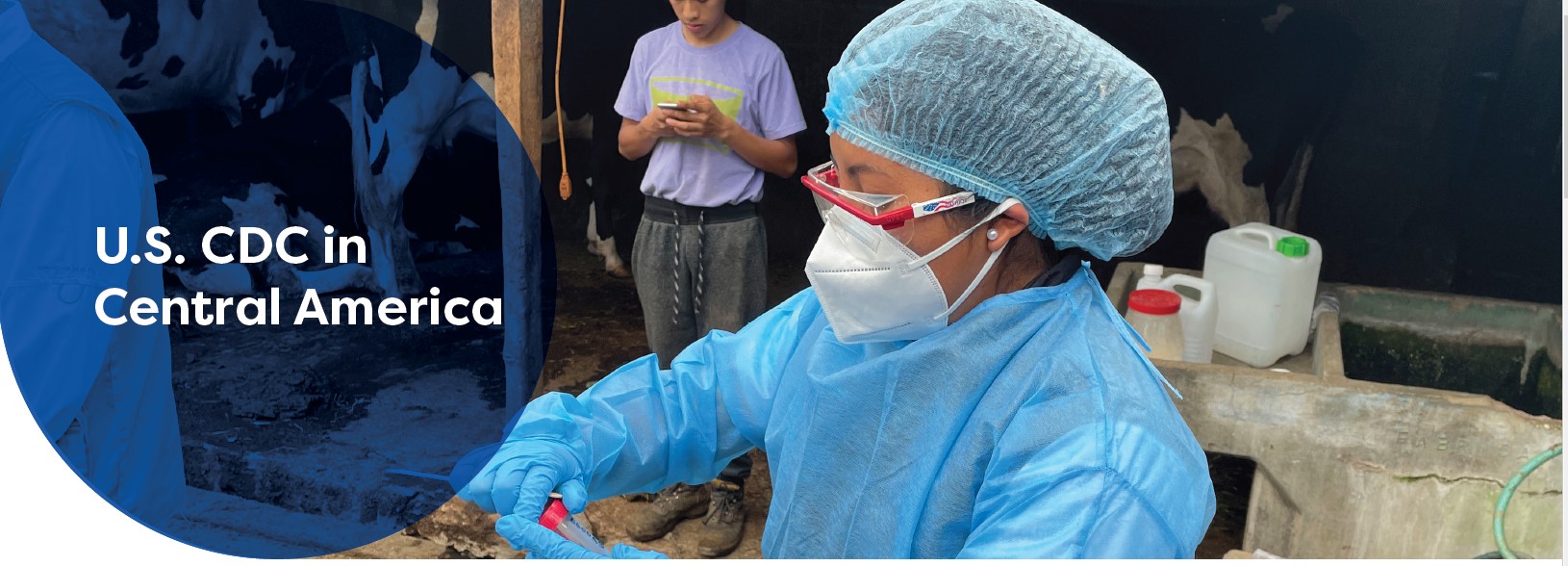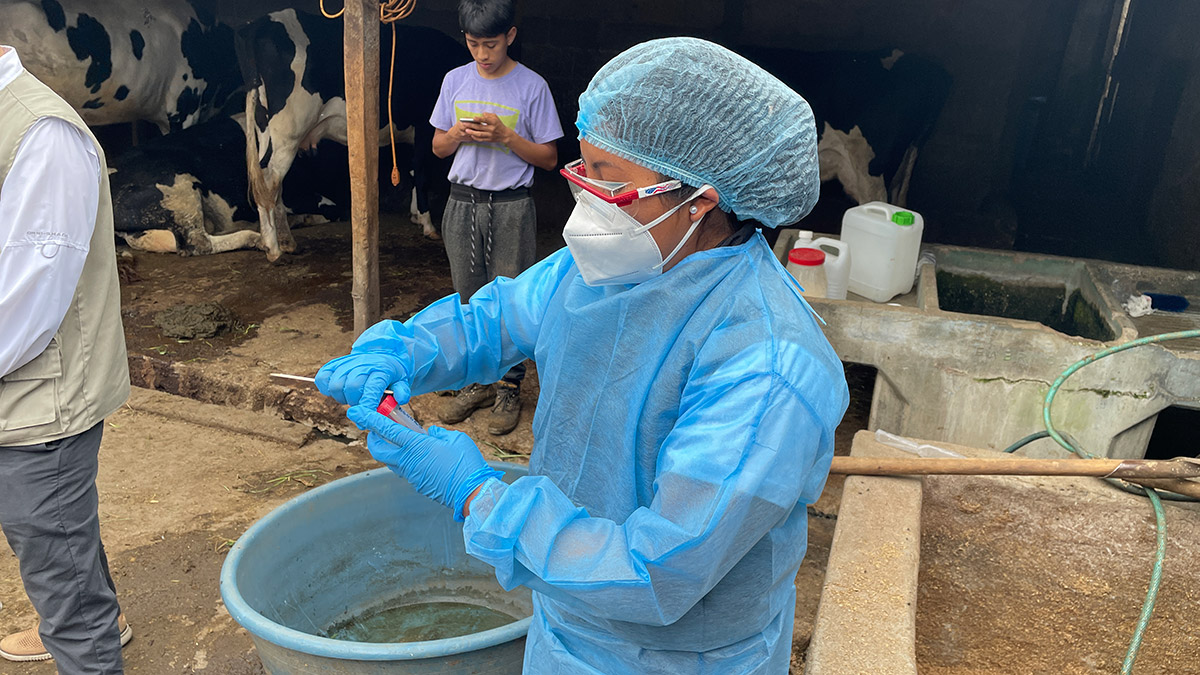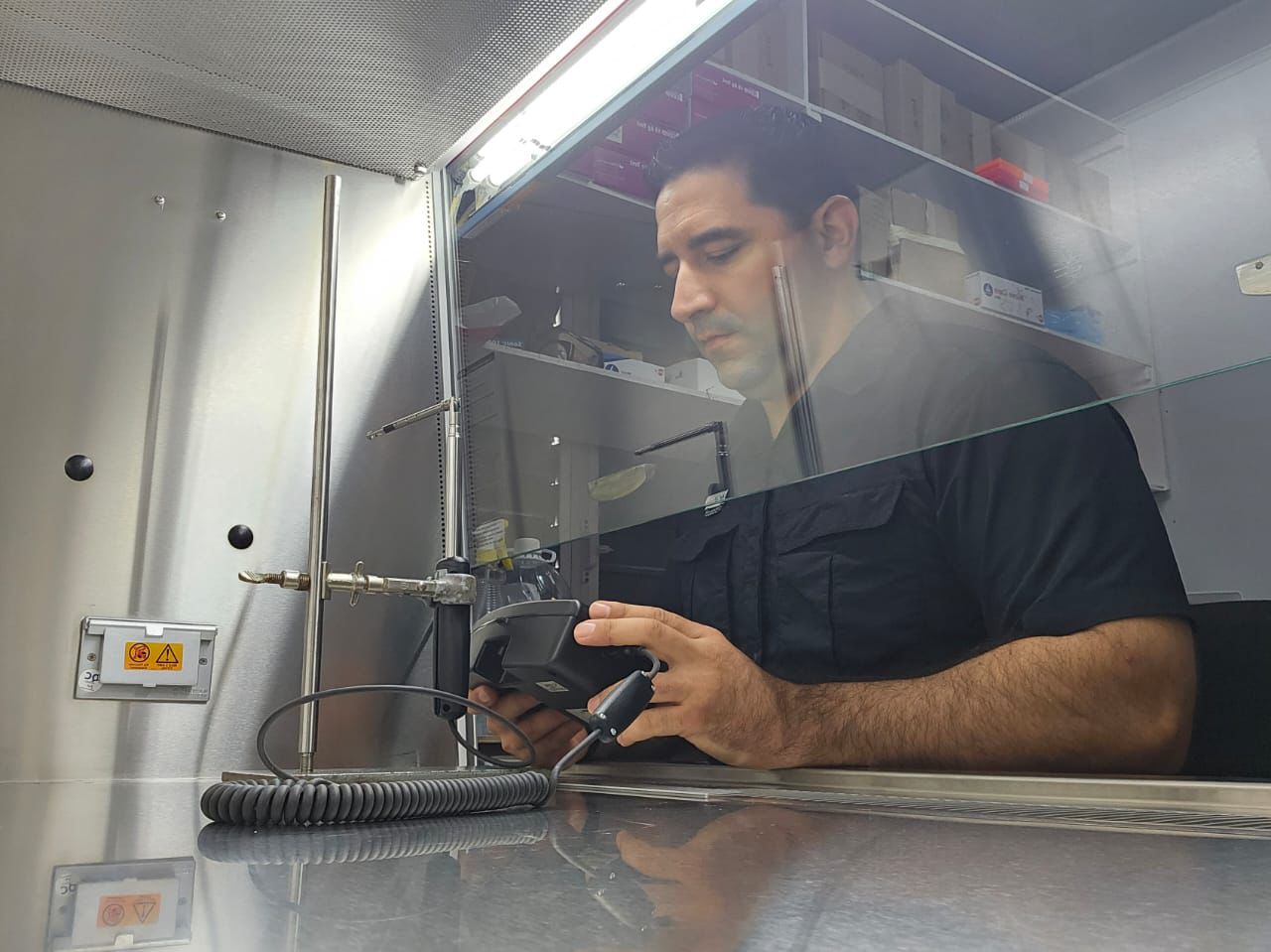At a glance
- CDC’s presence in Central America started in the 1960s and strengthened in 2003 with the establishment of the CDC Central America Program Office in Guatemala.
- CDC works with Ministries of Health (MOHs) and partner organizations in Belize, Costa Rica, El Salvador, Honduras, Guatemala, Nicaragua, and Panama.
- CDC’s Central America office in Guatemala protects America by bolstering regional health security, and expanding HIV and tuberculosis (TB) services.

Overview

CDC's presence in Central America started in the 1960s and strengthened in 2003 with the establishment of the CDC Central America Program Office in Guatemala. The Guatemala office works with Ministries of Health (MOHs) and partner organizations in Belize, Costa Rica, El Salvador, Honduras, Guatemala, Nicaragua, and Panama. It also guides selected activities in Colombia, the Dominican Republic, and Peru.
CDC's Central America office in Guatemala protects America by bolstering regional health security, and expanding HIV and tuberculosis (TB) services. The work also strengthens surveillance for key pathogens that may pose a threat to the United States.
Key accomplishments
- More than 5,000 graduates from the Central America Field Epidemiology Training Program (FETP). These field epidemiologists sharpen skills to detect, report, and respond to outbreaks.
- Provided specialized training for 4,000 Central American laboratory personnel.
- CDC partners with over 40 HIV clinics in Central America to provide evidence-based HIV testing for more than 123,000 people and HIV treatment for over 31,000 people.
- Conducted seven One Health Zoonotic Disease Prioritization workshops with ministries of agriculture, health, and environment across Central America.
- CDC is a key partner in outbreak investigations, including measles, rabies, fungal infections, dengue, foodborne diseases, respiratory disease, and zoonotic diseases such as New World Screwworm (NWS).
Global health security
CDC Central America works with countries and regional partners to bolster capacity to conduct disease surveillance, respond to outbreaks response, strengthen laboratory systems diagnostics, and develop their workforce.
Surveillance strengthening
CDC Central America strengthens surveillance for key infectious disease pathogens and antimicrobial resistance in Central America and the Dominican Republic that could threaten the United States. CDC's Acute Febrile Illness Surveillance Network in Central America and the Dominican Republic identifies emerging disease threats, strengthens regional collaborations, and increases capacity to use data to guide public health responses.
CDC collaborates with multisector ministries across Central America to support the One Health approach that reinforces cross-disciplinary surveillance, prevention, and control of zoonotic diseases.
Laboratory strengthening
CDC Central America lab work boosts laboratory-based disease surveillance and detection of novel strains and pathogens. CDC provides technical assistance to the Regional Network of National Laboratories (REDLAB) strategic plan. Other CDC Central America lab activities include:
- Strengthen genomic surveillance in Guatemala, Costa Rica and Panama.
- Increase diagnosis of fungal diseases in Belize and El Salvador.
- Enhance surveillance of norovirus and rotavirus in Costa Rica.
Workforce development
CDC's Field Epidemiology Training Program (FETP) bolsters field epidemiologists' expertise to investigate and respond to disease outbreaks. FETP graduates, also know as disease detectives, and CDC partners investigate outbreaks that can pose a threat to the United States, such as Guillain Barre Syndrome in Guatemala; mucormycosis and dengue in Honduras; and rabies in Belize.
Emergency response
CDC provides technical support to Ministers of Health during regional outbreak investigations. Currently CDC Central America and CDC in Atlanta are supporting regional outbreaks of the New World Screwworm. In the last 20 years, CDC Central America has been a key partner in responses to measles, rabies, fungal infections, dengue, foodborne diseases, and COVID-19. During COVID-19, trusted relationships between CDC and MOHs allowed to quickly expand regional laboratory capacities and surveillance.
HIV and TB
As a key implementer of the U.S. President's Emergency Plan for AIDS Relief (PEPFAR), CDC plays an essential role in the fight against HIV and TB. With unmatched scientific and technical knowledge and long-standing relationships with ministries of health, CDC is uniquely positioned to advance HIV, TB, and other global health security activities that keep Americans safe at home and abroad.
Through PEPFAR, CDC provides critical support to Central America's public health infrastructure, improving the country's ability to prevent, detect, and respond to HIV, TB, and other infectious diseases and minimizing their risk from entering the U.S.
Read more about CDC's HIV and TB work in Central America:
Border health
The movement of people, animals, and animal products has increased from international travel and trade. As a result, diseases can spread quickly across borders and around the globe.CDC works on many border health activities include to enhance border health systems. CDC partners with countries to improve HIV services for mobile populations. CDC strengthens border health security conducting trainings on surveillance, public health policy, preventing cross-border spread of diseases, and responding to health emergencies at points of entry.
CDC Central America border health work includes:
- Identifying challenges in detecting and responding to health threats among populations moving within and out of Central America.
- Updating public health emergency plans and standard operating procedures to detect and respond to ill travelers at points of entry in El Salvador and Honduras.
- Strengthening information-sharing and collaboration between Costa Rica and Panama to facilitate coordinated responses to health threats.
Success story spotlight
Strengthening Biosafety in Central America

Biosafety is one of the most critical elements of effective laboratory work and timely diagnosis of diseases. Using properly certified and maintained equipment, particularly Biosafety Cabinets (BSCs), is vital to ensuring a secure laboratory system that produces accurate results and protects staff and the environment from infectious microorganisms.
In low- and middle-income countries, it can be very challenging to obtain and maintain certified equipment like BSCs when local laboratory leaders have limited resources. BSCs are often used without proper calibration and certification due to the high costs of certifiers and lack of their availability. Even just the travel cost for certifiers from another country to visit and certify a single BSC is higher than the actual certification cost.
Recognizing the need for a sustainable solution in Central America, CDC staff based in Guatemala, the Council of Ministries of Health of Central America and the Dominican Republic (COMISCA), and the Costa Rican Institute for Research and Teaching in Nutrition and Health (INCIENSA) came together to figure out how they could strengthen local expertise in BSC certification.
The team sought a local engineer who could easily travel across the region at a lower cost. They found an electromechanical engineer named José Quesada who was already in charge of maintaining INCIENSA's equipment and facilities. José served as a local subject matter expert to lead the region's BSC certification goals into a reality. Through rigorous training, he became an accredited BSC certifier, and now serves as a local champion on a mission to enhance biosafety in Central America.
Honduras and Belize national laboratories are now BSC certified. This initiative exemplifies collaboration, innovation, and local capacity strengthening that will have long-term, sustainable impacts on laboratory systems and worker safety across Central America.
